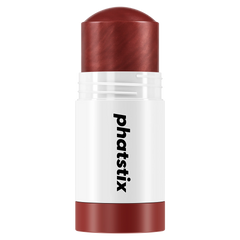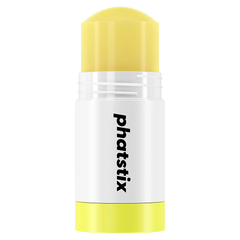The Kitchen-Table Phase
I started like most beauty entrepreneurs - thinking I was a genius for mixing some oils together in my kitchen. Fifteen formulations later, I had something that worked brilliantly... for about three weeks. Then the mysterious crystals appeared. Turns out there's a reason we have labs.
The Lab Reality Check
Walking into Here2Grow in York with my kitchen concoction felt like bringing your crayon drawing to the Tate. But instead of laughing me out of the building, they were reassuringly impressed and seemed to think I had a fair idea that I knew what I was doing–maybe I did!
Here's what actually happens in proper product development:
First, they take your idea and ensure it's safe. This involves:
-
Stability testing (will it turn into soup in summer?)
-
Microbial testing (is it growing things it shouldn't?)–on this, we didn't actually need to do that because it's only in products that contain water, and Phatstix doesn't.
-
Safety assessments (will it actually kill someone?)
Then comes the fun part - the 12-week kiln test. Imagine putting your product in an oven for three months, checking it weekly, only to discover it's developed interesting new colours. Back to square one. Luckily, Phatstix eventually passed with flying colours.
The Regulation Marathon
Remember when I said two years? Most of that wasn't making the product. It was paperwork. You need:
-
Safety certifications
-
Manufacturing standards compliance
- Packaging compliance and materials compatibility testing
-
Product Information Files (PIFs) that make War and Peace look like light reading
-
Insurance that covers everything from "product made lips fall off" to "customer used it to grease their bike chain"–that's a joke! Don't put that to the test.
The Packaging Saga
Ever wondered why beauty products all come in similar packaging? Because making custom containers costs more than a small house. I spent months trying to find a British manufacturer for our tubes. Spoiler: I'm still looking.
Your options are:
-
Remortgage your house to make custom tooling that plug into the plastic moulds.
-
Use standard packaging (but then how are you different?)
-
Order from China (and spend six months learning why that's complicated).
I ended up having to use a Chinese manufacturer who have been very reliable. They source plastics from very reliable and household name suppliers and have been able to do a huge amount for us. My dream, as I say, is to have it all done in the UK, and hopefully we'll get there.
The Money Bit
Here's what nobody tells you about beauty product costs:
-
The product itself? Maybe 10% of your costs
-
The container? Another 20%
-
Testing and certification? 30%
-
Insurance? Don't ask
-
Your sanity? Priceless
All in all, Phatstix took a more than I'd planned to get to market, but not quite as much as I would have risked. I was told many times that if you're going to make a skincare product, a balm is the absolute hardest thing to do. Take that from me, they were right; but being able to overcome it with something I truly love, feels like an unbelievable achievement.
The Timeline Truth
For those planning their own beauty empire, here's a rough timeline:
-
Initial development: 3-6 months
-
Lab formulation: 2-3 months
-
Stability testing: 3 months (if you're lucky)
-
Safety assessments: 1-2 months
-
Packaging development: 6 months minimum
-
Regulatory approval: 1-2 months
-
Manufacturing setup: 2-3 months
-
Time spent crying in corner, shaking: Ongoing
Was It Worth It?
Yes, absolutely. Though if I'd known what I was getting into, I might have just stuck with buying lip balm like a normal person. But it's been an incredible journey and learning exercise and I think what I've been able to bring you has been worth it–your 4.9/5 star reviews at the time of writing seem to back that up, but I'm still amazed and in slight disbelief with every review that appears.
For those still keen to create their own beauty product, my advice is simple: start with more money than you think you need, double your timeline expectations, then double them again, and look at all the regulatory stuff first. And maybe keep your day job. At least until you've passed the kiln test.
Next time someone asks why beauty products cost what they do, show them this. Though in our case, we still managed to make it 31% cheaper per gram than the high street stuff. Not that I'm counting or anything.
So if doing a lip balm is one of the hardest things to do; what is the second hardest thing to do in skincare? Put SPF in a product... watch this space.



